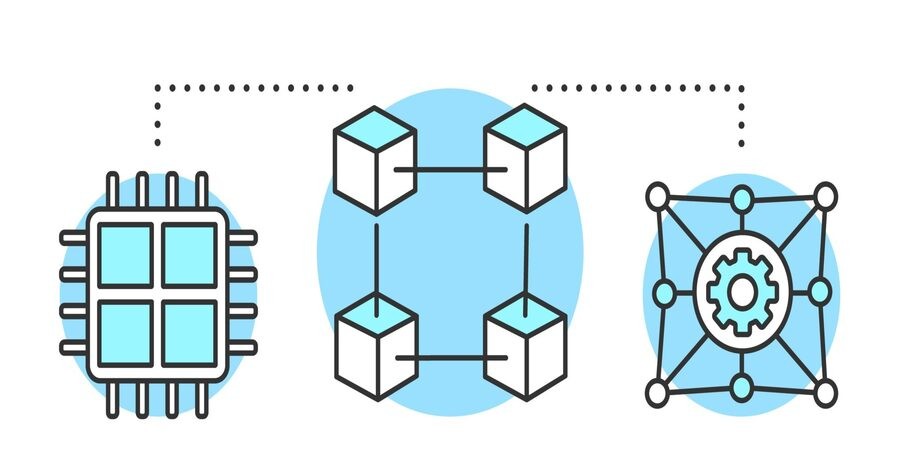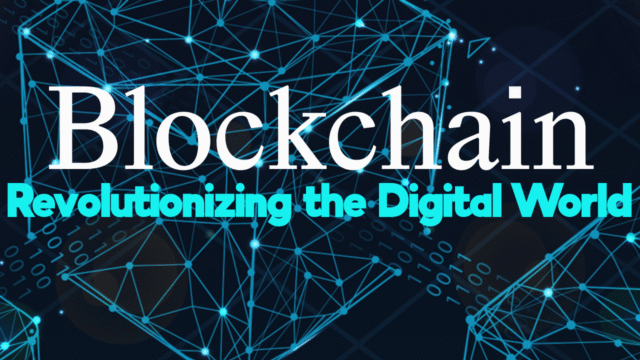In 2025, cybersecurity and digital trust are undergoing a pioneering transformation fueled by blockchain. These five emerging trends are redefining how organisations, governments, and individuals protect digital assets, ensure privacy, and build future-proof systems. Here’s a comprehensive look—reshaped with journalistic clarity and optimised for search engines—into how blockchain is becoming the backbone of digital security.
Table of Contents

1. Post‑Quantum Cryptography: Building Security for the Quantum Era
As quantum computing advances, traditional encryption methods must evolve. Current public-key systems—based on elliptic curves or RSA—are vulnerable to future quantum attacks using algorithms like Shor’s and Grover’s. To counter this, blockchain platforms are integrating post‑quantum cryptography, adopting lattice-based and hash-based signatures designed to withstand quantum-level threats. Researchers have outlined strategies for migrating existing networks—like Bitcoin, Ethereum, and Ripple—to quantum-resistant frameworks, ensuring transaction integrity and wallet security years into the future.
These migrations involve hybrid models that combine classical cryptography with quantum-resistant layers. Organizations are auditing their systems, preparing for “Q‑Day,” the moment when quantum power renders legacy encryption obsolete.
2. AI‑Powered Blockchain Analytics for Proactive Security
Blockchain’s immutable ledger is a goldmine of activity data, and AI is now being deployed to monitor, analyse, and respond in real time. Machine learning models detect fraud patterns, abnormal network behaviour, and smart contract exploits before they escalate. These systems automate threat detection and compliance audits, reducing human error and defending against coordinated attacks.
With predictive analytics, organisations can pre-emptively halt suspicious transactions, significantly strengthening digital defences in sectors like DeFi, identity services, and cross-chain finance.

3. Privacy‑Enhancing Computation: Zero-Knowledge Proofs & Beyond
Privacy in blockchain is no longer optional—it’s essential. Technologies like Zero-Knowledge Proofs (ZKPs), homomorphic encryption, and Secure Multi-Party Computation (sMPC) enable verification without exposure. Users can prove identity, credentials, or financial status without revealing sensitive data.
ZKPs are particularly transformative in DeFi, encrypted identity systems, and confidential business operations. They ensure compliance (e.g. KYC/AML) without compromising user privacy, and they safeguard against front-running and fraud in public transactions.
4. Decentralised Identity (DID) and Tokenised Access Management
Digital identity is shifting from centralised databases to self‑sovereign models, where individuals control their credentials. Blockchain-based identity systems—built on Decentralised Identifiers (DIDs)—enable users to authenticate securely without sharing personal details directly.
China’s RealDID, launched in December 2023, demonstrates nation-scale implementation of DID-based identity systems. It offers blockchain-powered authentication that balances anonymity with real-name compliance, extending even across regions like Hong Kong. Coupled with tokenised access control, these systems enhance user empowerment and minimise centralised breach risks.
5. Interoperability & Hybrid Blockchains: Balancing Compliance with Decentralisation
Interconnected blockchains are crucial for digital transformation, but they must remain secure and compliant. In response, hybrid blockchain solutions are emerging. These systems blend public decentralisation with private, permissioned compliance layers. They enable organisations to build dApps that meet regulatory requirements (e.g. AML/KYC) while preserving core blockchain values.
Efforts like trustless bridges, wrapped assets, and cross-chain ZKPs are facilitating secure data and transaction transfer across diverse networks without sacrificing privacy or resilience. Additionally, enterprise-focused networks such as Canton Network, backed by financial giants and built for atomic interoperability and privacy, are redefining regulated digital workflows.
Why These Trends Matter for Digital Security
- Future‑proof protection: Post‑quantum preparations guard against emerging quantum threats.
- Early threat detection: AI keeps pace with evolving fraud tactics faster than manual oversight.
- Privacy without compromise: ZKPs and tokenised IDs secure personal data and regulatory compliance.
- Legal trust within decentralised systems: DID and hybrid models bridge transparency and regulatory integrity.
- Seamless cross-chain security: Secure interoperability opens up new decentralised ecosystems without exposure.
Looking Ahead: Challenges & Adoption Paths
- Migration complexity: Shifting to post‑quantum algorithms will require hardware, protocol, and compatibility upgrades.
- Regulatory readiness: Global standards for identity, encryption, and interoperability are still evolving—organisations must align proactively.
- Balancing openness and control: Hybrid blockchain models require careful architecture to optimise usability while satisfying compliance.
- Evolving threat landscape: AI-enabled scams—like deepfake-generated fraud—are spiking. As noted by TRM Labs, crypto‑related scams surged by over 456% between May 2024 and April 202.

What Stakeholders Should Do Now
- Audit cryptographic systems: Assess current reliance on vulnerable cryptographic methods and plan phased upgrades.
- Integrate AI monitoring: Deploy AI analytics tools to detect anomalies, optimise compliance, and reduce manual oversight.
- Adopt DID platforms: Test or pilot decentralised identity solutions for secure, user-controlled access.
- Invest in ZKP and encryption tooling: Enable confidential computing, identity proofs, and cross-chain verification using modern cryptography.
- Engage with standards and networks: Participate in communities like W3C DID working groups or interoperable systems such as Canton Network.
Final Thoughts
In 2025, digital security is being reshaped by blockchain’s fusion with cryptography, AI, privacy engineering, identity sovereignty, and cross-chain architecture. Together, these trends form a new paradigm where security doesn’t just protect—it empowers.
By staying informed and proactive today, organisations can align with this transformation, ensuring that the digital systems they build are resilient, private, and future-ready.
Join Our Social Media Channels:
WhatsApp: NaijaEyes
Facebook: NaijaEyes
Twitter: NaijaEyes
Instagram: NaijaEyes
TikTok: NaijaEyes





